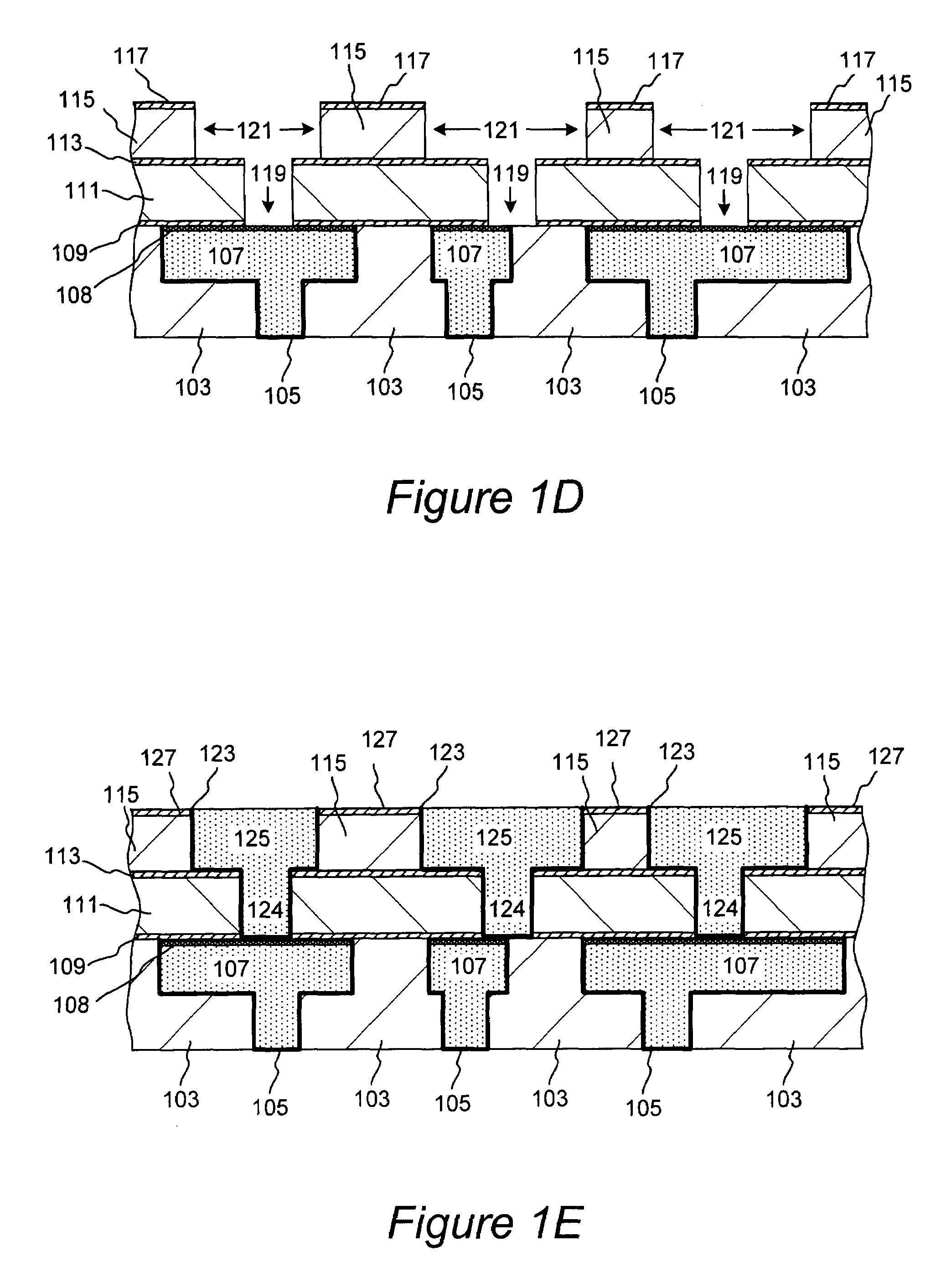Protective self-aligned buffer layers for damascene interconnects
a buffer layer and self-aligning technology, applied in the direction of semiconductor devices, semiconductor/solid-state device details, electrical apparatus, etc., can solve the problems of metal electromigration drop, improve adhesion, improve the properties of damascene interconnects, and reduce the effect of metal electromigration
- Summary
- Abstract
- Description
- Claims
- Application Information
AI Technical Summary
Benefits of technology
Problems solved by technology
Method used
Image
Examples
examples
[0114]One example of a PSAB-forming process is illustrated in an experimental timing diagram shown in FIG. 8. Flow rates of process gas components and plasma parameters are plotted as a function of time. X-axis lists process time in seconds, and Y-axis lists arbitrary parameters that correlate with flow rates and plasma power. Curve (a) corresponds to H2 flow, curve (b) to NH3 flow, and curve (c) to SiH4 flow. Curve (d) corresponds to HF RF power level, and curve (e) to LF RF power level.
[0115]In the described example; the process is started by a plasma pre-clean operation. The partially fabricated semiconductor device having an exposed pattern of copper lines in a dielectric was obtained after a CMP operation, and was placed into a process chamber of a PECVD VECTOR™ apparatus. The entire PSAB-forming process was performed at one station of a four-station apparatus. First, the substrate was pre-heated to 275° C., and H2 was introduced into the process chamber at a flow rate of 4000 ...
PUM
| Property | Measurement | Unit |
|---|---|---|
| pressure | aaaaa | aaaaa |
| temperature | aaaaa | aaaaa |
| temperature | aaaaa | aaaaa |
Abstract
Description
Claims
Application Information
 Login to View More
Login to View More - R&D
- Intellectual Property
- Life Sciences
- Materials
- Tech Scout
- Unparalleled Data Quality
- Higher Quality Content
- 60% Fewer Hallucinations
Browse by: Latest US Patents, China's latest patents, Technical Efficacy Thesaurus, Application Domain, Technology Topic, Popular Technical Reports.
© 2025 PatSnap. All rights reserved.Legal|Privacy policy|Modern Slavery Act Transparency Statement|Sitemap|About US| Contact US: help@patsnap.com



